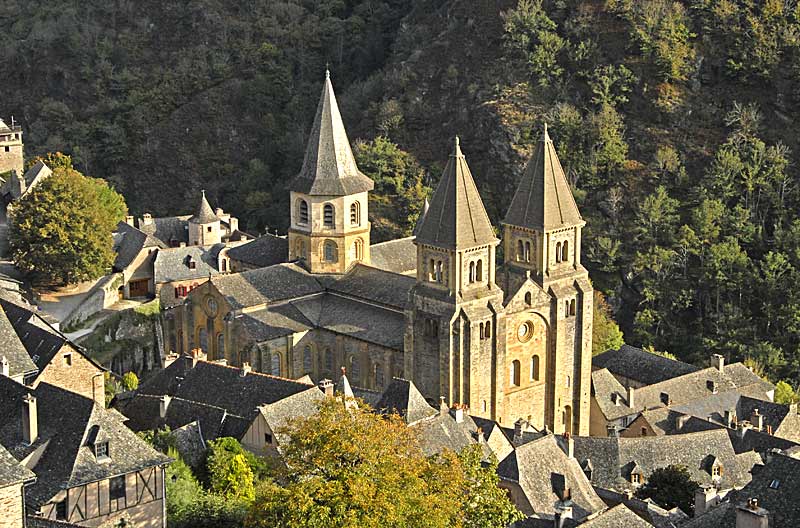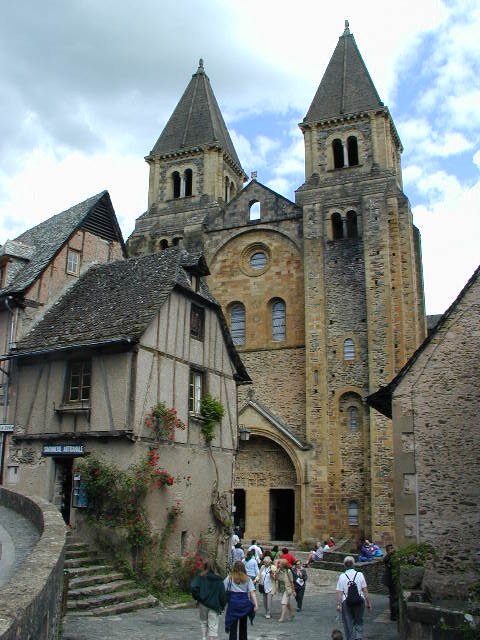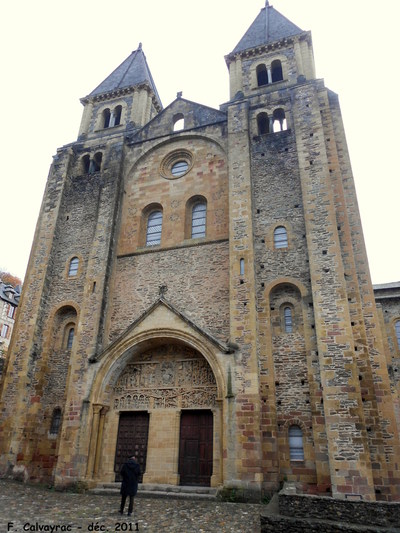
The St. Foy abbey-church in Conques was a popular stop for pilgrims on their way to Santiago de Compostela, in what is now Spain. The main draw for medieval pilgrims at Conques were the remains of St. Foy, a martyred young woman from the fourth century. The original chapel was destroyed in the eleventh century in order to facilitate the creation of a muchx-large r church as the arrival of the relics of St. Foy caused the pilgrimage route to shift from Agen to Conques. The second phase of construction, which was completed by the end of the eleventh-century, included the building of the five radiating chapels, the ambulatory with a lower roof, the choir without the gallery and the nave without the galleries. The third phase of construction, which was completed early in the twelfth-century, was inspired by the churches of Toulouse and Santiago Compostela.
The exterior length of the church is 59 meters. The interior length is 56 meters. the width of each transept is 4 meters. The height of the crossing tower is 26.40 meters tall. The third phase of construction, which was completed early in the twelfth-century, was inspired by the churches of Toulouse and Santiago Compostela. Like most pilgrimage churches Conques is a basilica plan that has been modified into a cruciform plan.
 Galleries were
added over the aisle and the roof was raised over the transept and choir to
allow pilgrims to circulate at the gallery level.
The western aisle was also added to allow for
increased pilgrim traffic. The exterior length of the church is 59
meters. The interior length is 56 meters.
Galleries were
added over the aisle and the roof was raised over the transept and choir to
allow pilgrims to circulate at the gallery level.
The western aisle was also added to allow for
increased pilgrim traffic. The exterior length of the church is 59
meters. The interior length is 56 meters. 